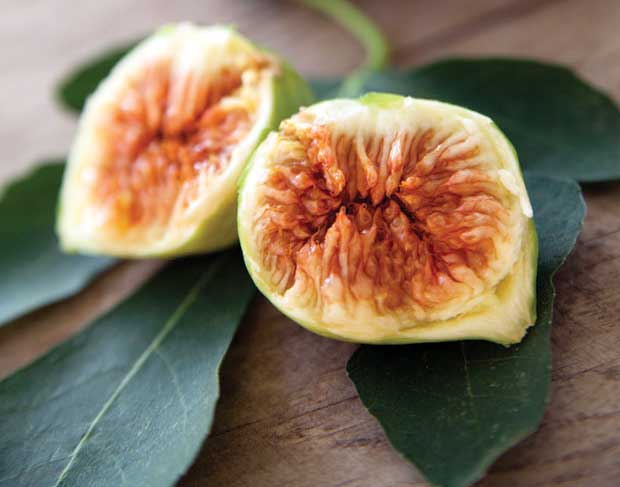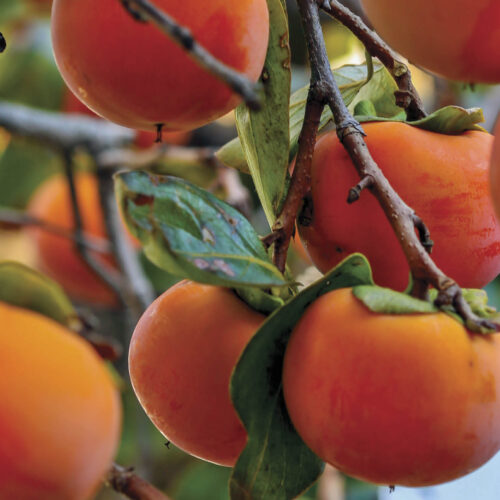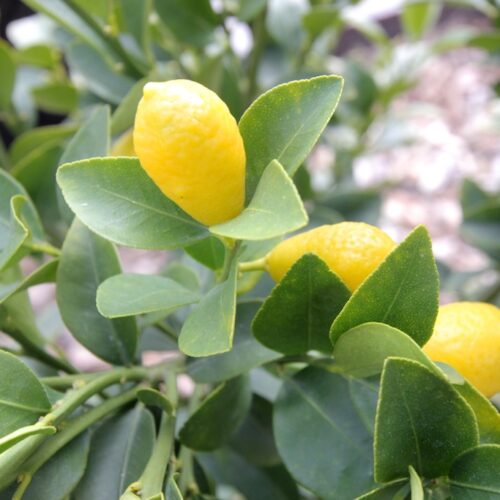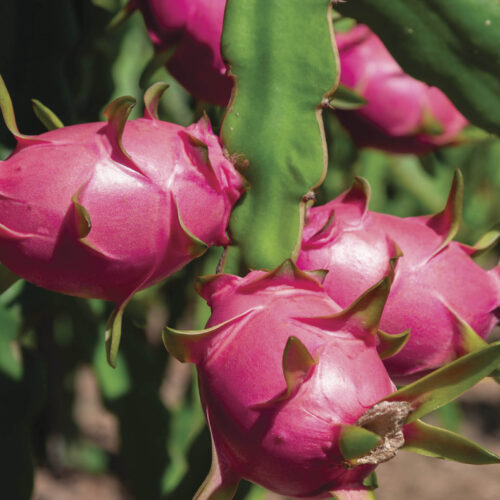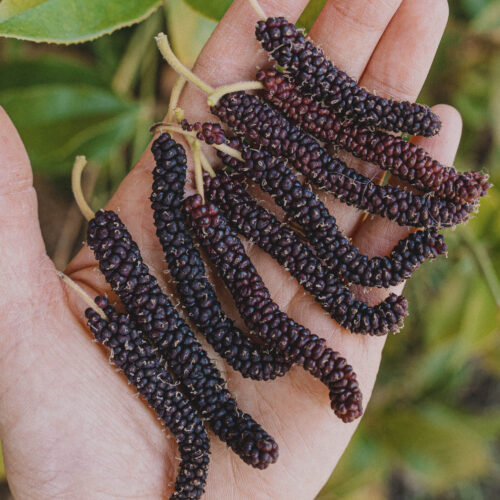Fabulous figs
2012-03-25T10:26:21+11:00
Fresh figs are hard to find at markets and grocers, making them an ideal fruit tree for home gardens, says PENNY WOOWARD.
Today we do not often see fresh figs for sale and I suspect there are many young people who have never tasted one. While figs are the perfect fruit tree for the home garden, they are less and less likely to be grown commercially because although they are fabulous when picked and eaten straight from the tree, they don’t store or travel well – all the more reason to grow your own.
Figs are classic Mediterranean plants, liking hot dry summers, cool winters and adequate but not too much water during spring and summer. They thrive in slightly alkaline soils (pH 7 or a little more) and, unlike some of our native figs, don’t like to be wet for long periods.
A good spot
Figs have a reputation as tough, low-care trees, but they do need a little extra attention when young. Choose a well-drained position out of the wind, well away from sewer pipes and dig a barrow load of compost and well-rotted manure into the soil. Add two handfuls of dolomite lime if your soil is acid. Plant and water well.
As the tree grows, water regularly and, as the roots are fairly shallow, mulch with pea straw or lucerne hay to keep the roots cool and moist. Don’t over-fertilise with nitrogen-based fertilisers as this leads to vigorous leaf growth at the expense of the fruit. And don’t cultivate around the base of the tree as this can damage the shallow roots and cause suckering. Cut off any suckers that appear.
By winter, in cooler regions, figs will have lost all their leaves and in this dormant state can cope with temperatures down to -10°C. However, late spring frosts that occur once the new growth is well underway can cause serious damage. Trunks are also susceptible to sunburn, so in spring in hot regions growers will often paint the trunk with a diluted water-based white paint to reflect the heat. Once established, figs don’t need much feeding, just top-dress with compost every couple of years.
Home propagation
Figs can be propagated by air layering and grafting but are most easily grown from cuttings taken in winter when the tree is dormant. Take pieces about 25cm long, cutting just below a node. In warm regions you may have more success if you wrap the pieces in damp newspaper, put them into a plastic bag and then into the fridge for two weeks.
Dip the cuttings into honey and then push them into a deep pot filled with propagation mix, or just push into the ground in a shaded position. Leave only two or three buds above the soil. Keep moist and in a shady position until the first leaves appear, then feed with some compost tea or worm juice as well as seaweed extract.
About two months after the first leaves appear, when the small tree is growing strongly, carefully dig up or re-pot (disturbing the roots as little as possible) into a pot filled with a good potting mix combined with rich compost.
Water well with seaweed extract to minimise transplant shock and leave in a semi-shaded position. Plant the tree into its final position the following winter.
Fruit and flowers
Most figs now grown in Australia are self-fertile, also known as persistent or common figs. We never actually see fig flowers as they develop inside the fruit. The fruit (more correctly called synconia) of self-fertile types contains only female flowers and it develops without being pollinated. Other types of figs are known as Smyrna and San Pedro. These generally require a fig wasp to cross-pollinate with Capri figs before edible fruit will develop (see ‘The politics of pollination’ box on page 34).
Many figs have two crops, the first is known as the “breba” crop and grows in spring from the previous year’s wood. Small figs will often form on the ends of branches in autumn, stay on the tree right though winter and then develop ready to be harvested in December and January. These breba figs are often bigger than the later, larger crop, known as the “higos” or main crop. This later crop grows on the new season’s wood and is harvested from February to June.
Figs are best picked and eaten straight from the tree. Wait until they achieve their full colour (purple, brown, green or yellow depending on type) and begin to soften. Louis Glowinski, in his seminal The Complete Book of Fruit Growing in Australia, says that the best time to pick them is when the neck softens and the fig begins to droop with its own weight. Don’t pull, always gently twist the stem when picking.
If you like your figs really sweet then wait until the fruit is very soft. Fruit that is to be dried needs to be very sweet so is often left until it drops to the ground before harvesting. The milky sap that oozes from the stem of unripe or not-quite-ripe fruit can be irritating to the skin, so wear gloves if you are picking more than a couple.
Figs can be eaten fresh; cooked by baking, stewing or poaching; made into jam or frozen or dried.
Pruning & restricting
Figs are always pruned in winter and these prunings can be used as cuttings. Traditionally they are pruned to a vase shape, open in the middle with four or five main structural branches. Every winter remove any broken, overlapping or diseased branches and then lightly prune the whole tree, cutting back any particularly long branches by about half.
Every few years, prune more heavily (up to two-thirds) to encourage enough new wood for a good crop. If your tree produces a breba crop, then leave some of the old wood for this crop and prune these branches the following year.
If you want to plant your fig into the ground, but need to keep the tree small, then dig a pit 1m cubed, line with bricks or stones to restrict the roots and then fill and plant in the same way as for a pot. Figs also make interesting hedges because they respond so well to pruning, but remember they will be see-through hedges in winter.
Problems, pests and diseases
Very hot days can cause fruit to be dry and without pulp, while very cold and damp conditions when the fruit are developing may result in splitting and fungal attack. Wet weather followed by heat can cause the fruit to ferment.
Trees are prone to fungal attack (rusts, leaf spots and anthracnose) especially in humid and shady positions. Remove some branches to open up the foliage of the fig tree and cut back surrounding vegetation to give more light and air movement. Spray with organic fungicidal sprays such as bicarbonate of soda and garlic chives, and regularly spray with seaweed extract to toughen the leaf surface to make them less susceptible.
The black slug-like larvae of the figleaf beetle feeds off fig leaves; control these by spraying with molasses, soap or spinosad (see photos and caption on page 33). In northern regions fruit flies are a problem; control with baits and by bagging fruit.
The other major pests are birds and possums. Some gardeners find that their crops are so prolific that they don’t mind sharing with wild creatures, but if your tree is young or small there will not be enough, so net the whole tree or bag fruit to protect them from hungry wildlife.

